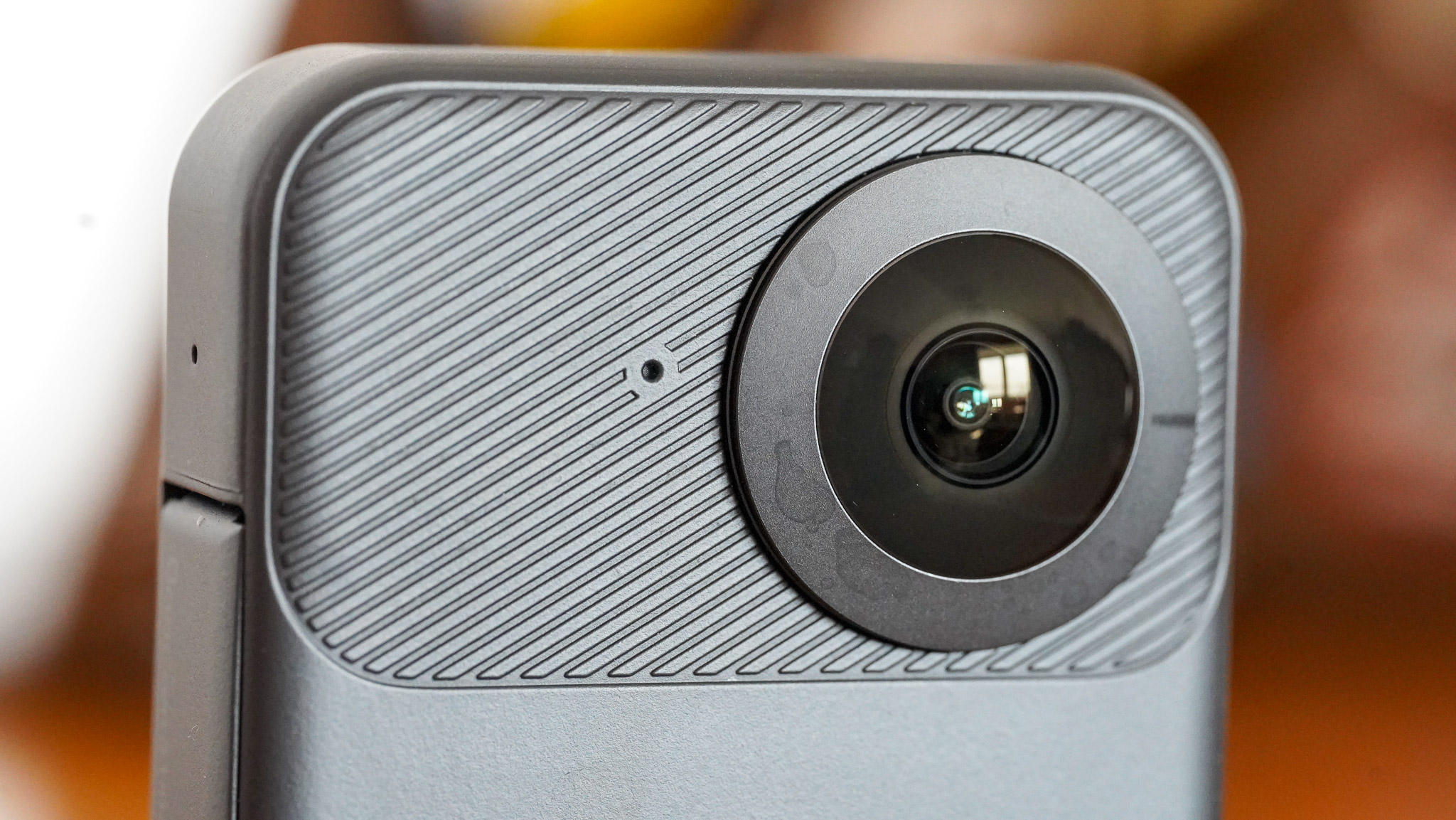DJI’s OSMO 360 has a GoPro-style design, but what’s inside is even more surprising
DJI takes a different route from Insta360, and it might just pay off


DJI’s long-rumoured 360-degree action camera is finally starting to take shape.
Leaked images show a chunky, GoPro Max-style design that bucks the industry’s recent shift toward slim, cylindrical form factors.
However, the most interesting thing about DJI’s new cam isn’t how it looks but its battery.
According to a leak sourced by Notebookcheck, the DJI Osmo 360 will feature a 1,350mAh battery, which might sound puny compared to the Insta360 X5, packing a 2,400mAh power source.
Will the OSMO have terrible battery life? Not nececcasirly. Paired with DJI’s renowned power optimisation and efficient chipsets, it could translate to real-world endurance that punches above its weight, especially when shooting at higher bitrates or in demanding conditions.
A return to the ‘stubby’ design: why?
While Insta360 has built its reputation on sleek, pocketable 360-degree cameras like the Insta360 X3 and Insta360 X4, DJI appears to be taking a very different approach.
The Osmo 360’s stubby, rectangular shape closely resembles the GoPro Max and the Kandao Qoocam 3 Ultra, a form factor many had written off as outdated.
Get all the latest news, reviews, deals and buying guides on gorgeous tech, home and active products from the T3 experts

But there are practical reasons for this design choice. A larger body allows for better thermal management, with more room for airflow and heat dissipation during demanding 360° video shoots.
It also provides greater flexibility when it comes to internal components, making space for dual touchscreens, larger lenses, and more powerful processing hardware.
And from a usability perspective, the wider base offers improved stability for tripod mounting or handheld shooting, something that could appeal to creators prioritising reliability over portability.
So, is it better to have a bulky design?
Compared to Insta360’s streamlined approach, DJI’s Osmo 360 looks chunky.
That might be a drawback for travel vloggers or FPV drone pilots who need lightweight gear.
A bigger body also risks adding weight, and while battery performance might improve, it could still mean a heavier carry overall.
Insta360’s thin design is the result of years of internal miniaturisation and proprietary thermal solutions.
DJI might be prioritising ruggedness and functionality over minimalism, at least for now.
From what we’ve seen so far, DJI isn’t trying to out-Insta360 Insta360.
Instead, the Osmo 360 seems like a camera designed for reliability, ease of use, and longer runtimes.
If DJI can back that up with class-leading image stabilisation and a smart editing pipeline (e.g. ShotGuides, LightCut integration, or automatic reframing), it might not matter how bulky the thing looks.

Matt Kollat is a journalist and content creator who works for T3.com and its magazine counterpart as an Active Editor. His areas of expertise include wearables, drones, fitness equipment, nutrition and outdoor gear. He joined T3 in 2019. His byline appears in several publications, including Techradar and Fit&Well, and more. Matt also collaborated with other content creators (e.g. Garage Gym Reviews) and judged many awards, such as the European Specialist Sports Nutrition Alliance's ESSNawards. When he isn't working out, running or cycling, you'll find him roaming the countryside and trying out new podcasting and content creation equipment.
You must confirm your public display name before commenting
Please logout and then login again, you will then be prompted to enter your display name.